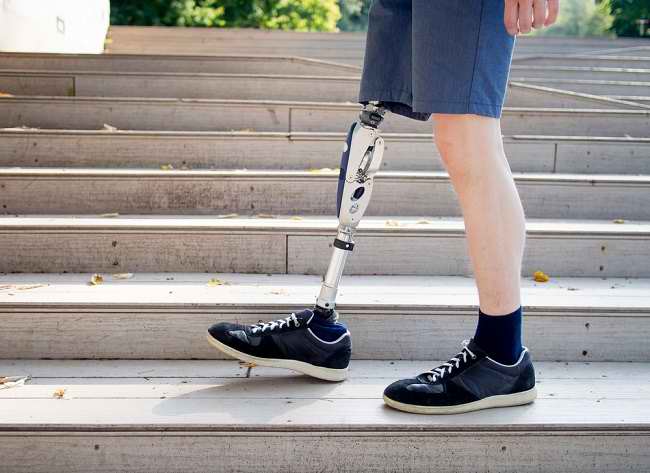Recognize the Causes and Ways to Overcome Phantom Limb Syndrome
Phantom limb syndrome is a condition when there is ongoing pain, itching, tingling, or numbness in an amputated part of the body. Phantom limb syndrome is estimated to occur in 60–80% of people who have had an amputation.
After undergoing an amputation in the foot or hand, a person may still feel pain in the missing body part. The duration of pain in each person is different, it can be several hours, days, or months. In fact, some have experienced this complaint for years.

Causes of Phantom Limb Syndrome
Until now, the cause of phantom limb syndrome is still unknown. However, this condition is thought to occur due to the formation of persistent pain stimulation in the part of the body that has been amputated due to nerve damage in that part.
Apart from the emergence of persistent pain excitement, phantom limb syndrome is also thought to occur due to changes in the nerves and brain that regulate and receive excitatory pain after the body has amputated.
Sometimes, pain or other sensations that occur in phantom limb syndrome can be more severe due to several factors, namely:
- Touches on amputated body parts
- Stress
- Fatigue
- Smoking habit
- Changes in air temperature, such as air temperature being cold or hot
- Lack of blood flow to the amputated part of the body
- Excessive swelling or pressure on the amputated part of the body
- Infections, such as shingles
How to Overcome Phantom Limb Syndrome
In some people, the pain due to phantom limb syndrome can decrease or subside by itself over time after amputation. However, if the pain does not go away or it gets worse, this condition should be seen by a doctor.
To overcome phantom limb syndrome, doctors can work on the following steps:
1. Administration of medicines
Actually there is no specific treatment that can cure phantom limb syndrome. However, doctors can provide medicines to relieve pain so that patients feel more comfortable and can resume their activities.
Treatment that doctors can give to treat phantom limb syndrome includes NSAIDs or opioids anti-pain medications, antidepressants, anticonvulsants, and local anesthetics.
2. Mirror therapy
Mirror therapy is done by placing or exposing a mirror to a healthy limb, then the doctor or physiotherapist will ask the patient to move both limbs (both normal and amputated).
Some sufferers of phantom limb syndrome experience improvement in symptoms after undergoing mirror therapy. However, the effectiveness and benefits of mirror therapy as a treatment for pain complaints after amputation are still further investigated.
3. Physiotherapy
Physiotherapy in patients with phantom limb syndrome is done to prevent stiffness in the amputated joint, increase blood circulation, and prevent contraction of muscle tissue (muscle atrophy).
When undergoing physiotherapy, doctors will also usually help patients to get back on their activities and work through occupational therapy.
4. Nerve stimulation therapy
This therapy works by sending electrical signals and stimulating nerves that are disturbed in the body that has been amputated, so that it can inhibit or reduce pain.
In addition, nerve stimulation therapy can also be performed on the spinal cord or in the brain to reduce pain due to phantom limb syndrome.
5. Psychotherapy
One factor that makes phantom limb syndrome difficult to improve is stress and depression. For this reason, patients who experience phantom limb syndrome after amputation are advised to undergo psychotherapy and counseling.
Through psychotherapy, patients will be trained to deal with stress and divert attention by carrying out certain activities, such as reading, listening or playing music, and painting, to alleviate complaints that arise.
After undergoing an amputation, it is important to get monitoring and undergo a series of treatments from a doctor so that your condition can improve.
If the phantom limb syndrome complaint does not go away within a few months after you undergo amputation, this complaint should be examined by a neurologist so that it can be treated appropriately.
Label : Healthy life
Comments
Post a Comment